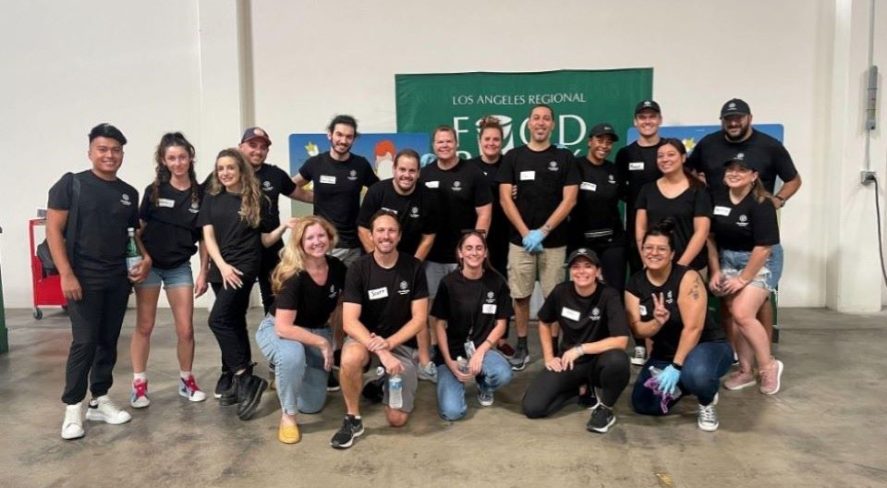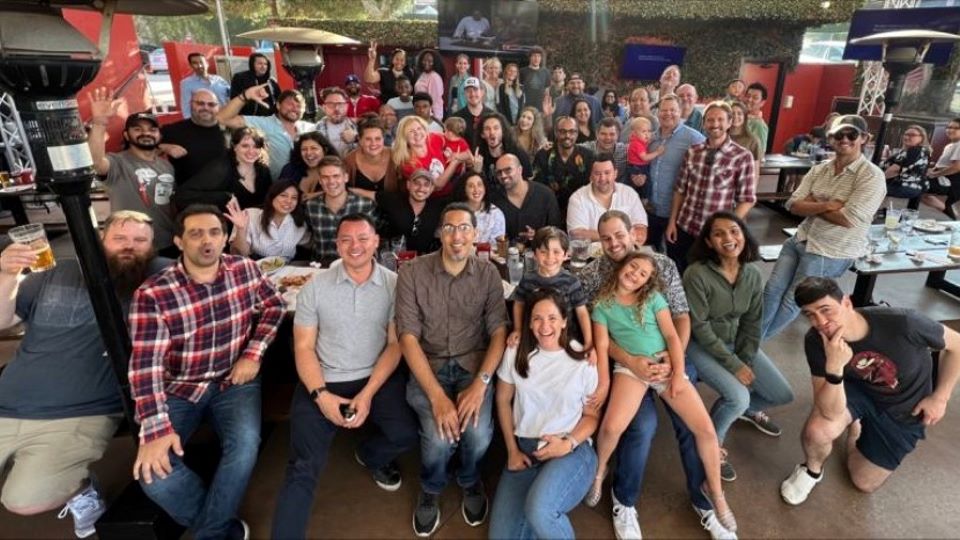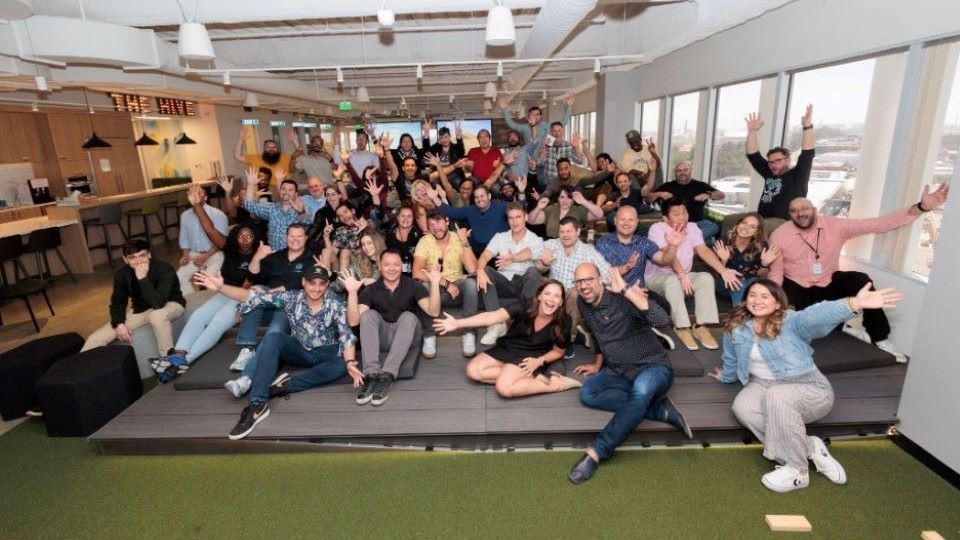SIA New Member Profile: HiveWatch

New Security Industry Association (SIA) member HiveWatch is a cloud-based security fusion platform that works with clients’ existing security systems to power their global security operations centers (GSOCs) through multisensor resolution. The company is headquartered in El Segundo, California, supports a hybrid remote workforce and has clients across the United States and globally.
SIA spoke with Ryan Schonfeld, founder and CEO of HiveWatch, about the company’s history and offerings, the security industry and working with SIA.
Tell us the story of your company.

Ryan Schonfeld: HiveWatch was born of necessity and a desire to fill a hole in the market that I experienced firsthand as a security practitioner.
In 2015, I was leading the global security and safety technology group for a Fortune 500 company when I noticed there were a significant number of inefficiencies stemming from disparate systems being used and antiquated policies. I got tired of hearing, “Because this is the way it’s always been done,” when I wanted to make improvements. I left and started RAS Consulting & Investigations, where I worked with clients to plan, educate and manage risk and liability by creating best-in-class, technology-forward security programs for rapidly growing organizations.
It was through RAS that I discovered there was a need in the market for scalable security, which many companies didn’t have the knowledge or human capital to create. From there, RAS Watch was created (and is now part of the HiveWatch offering), a GSOC as a service. Through the creation and growth of RAS Watch, we realized that there was yet another need for a software platform to help make security leaders and operators more aware, more connected, proactive and informed, which is how HiveWatch was ultimately created.

What solutions/services does your business offer in the security industry? And what makes your offerings/company unique?
RS: HiveWatch helps organizations become more operationally efficient no matter where they are in building their security programs.
Organizations with established in-house GSOCs can utilize HiveWatch’s GSOC Operating System that works with a company’s existing security systems. It requires no additional hardware, allows you to consolidate programs and systems and reduces alert noise. You can think of HiveWatch as the operating system for physical security.
Companies whose security programs are still in their infancy or have limited security resources can take advantage of HiveWatch’s virtual GSOC (vGSOC) using our own in-house state-of-the-art GSOC and trained team.
HiveWatch differentiates itself in the market by taking several challenges that traditional security programs face and making them more efficient:
- Noise: The HiveWatch Security Fusion Platform increases sensor accuracy, reduces false alerts and detects new threat vectors.
- Operational efficiency: Adding intelligence, automation and predictive threats means better orchestration across the enterprise.
- Communication: Security leaders need to be better able to communicate with each other, and HiveWatch’s intuitive dashboard provides that platform to share video feeds, content and metrics with both internal and external stakeholders.
- Quickly deploy: Speed matters and engaging in a large-scale PSIM installation won’t help your organization get up and running quickly. HiveWatch changes that.
- Scalability: Scale and aggregate data across your security systems, including access control, video, situational awareness, intelligence, employee travel and much, much more. HiveWatch’s approach and architecture reduces the brittleness that comes with many of the legacy products on the market like PSIMs.
What’s something we might not know about your company – or something new you’re doing in security?
RS: HiveWatch is approaching hiring and recruiting differently, and it’s significantly impacting how effective our platform is.
From the ground up, we’re building a business that’s focused on diversity, equality and inclusion (DE&I). We’re doing this in the following ways:
- Pay transparency: Organizations can build equity by establishing pay transparency and listing salary ranges in the job description.
- Recruiting outside physical security: It’s a fact that physical security suffers from a lack of diversity, so expanding outside of physical security is critical to diversifying the workforce. The differing experiences also strengthens the approach to solving challenges.
- Celebrating diversity: It’s not enough to hire well and engage in transparency. Fostering a culture of diversity is critical to creating a supportive workplace. Recognizing and celebrating differences enriches us all.
When building a platform with this focus in mind, we’re honoring this by asking questions related to the use of artificial intelligence (AI) like:
- Are our AI models biased to flag suspicion for a particular race?
- Are there other security threats that have been significantly under addressed because the safety has been dictated from the eyes of a singular persona?
DE&I is at the core of what we’re building, and we’re dedicated to this approach and changing the way the industry views diversity in the process.

What is your company’s vision, and what are your goals for the security industry?
RS: HiveWatch’s vision is to create an intelligent operating system for an organization’s physical security programs. We want to provide a platform that gives security leaders a central place to understand the performance of their physical security people, technology and customers, where they can execute quick reactions to incidents, resolve noisy events, and detect new threats through multisensor resolution.
Our goal is to meet an organization where they are building their security programs. What do we mean by that? For those companies with established in-house GSOCs, HiveWatch’s GSOC Operating System works with existing security systems to consolidate programs and systems while reducing noise. For those companies with security programs that are still maturing, HiveWatch’s vGSOC uses our in-house state-of-the-art GSOC and trained team to augment organizations with limited security resources.
What do you think are the biggest opportunities in the security industry right now?
RS: There are two camps when it comes to companies trying to solve physical security challenges: they’re either technology-driven or security-driven. The former has leadership that is solely focused on the advancement of technology at all costs. The latter, typically led by security practitioners, are too far from the leading-edge technology or required talent to execute on the solution.
This creates an opportunity in the security industry for a company to bridge the gap. (And yes, the answer is HiveWatch.)
You must have both when approaching the physical security of an organization because you cannot solely build new tech capabilities – you have to collect meaningful data from sensors to constantly improve on existing systems.
What are your predictions for the security industry in the short and long term?
RS: The future of physical security is rooted in developing solutions and technology that incorporates more consumer-driven usability and intelligence. We’re at a crossroads for doing things “the way they’ve always been done” and have a real opportunity to embrace forward-thinking approaches to building technology that not only works but takes into account the realities of the threats present in our society.
What are the biggest challenges facing your company and/or others in the security industry?
RS: The challenges for physical security center on the issues we discovered as the COVID-19 pandemic raged and employees moved quickly to remote work. This catalyst changed the way companies view work and, as a result, how they view physical and digital safety for their employees.
The rise of a distributed workforce ignited a lot of discussion around the duty of care that an organization has to ensure employees are protected – no matter where they are geographically. As a result, the goal of physical security practitioners shifted and the complexity exponentially increased. Security leaders need to be able to dynamically shift the measures they use on a case-by-case basis. For example, when an employee is working from home or traveling, but near a dangerous event like a shooting or a weather event, there’s a potential risk for that employee to get injured or for the business’ continuity to be disrupted. This means the environment becomes the paramount indicator for the type of duty of care that needs to be implemented.
A direct impact to employees working in more remote and hybrid environments also meant a rapid shift toward digital transformation – and many companies were ill prepared to handle this change; however, now that many companies are realizing the long-term benefits of a more mobile workforce, moving to more cloud-based operations enterprisewide is commonplace, and while the benefits are vast, there are significant implications for data security. Maturing security organizations now need their cloud-based security software to have the ability to access and control camera systems, monitor video feeds, conduct maintenance tasks, evaluate system health and perform updates to firmware/software from remote locations.
Taken together, the challenges across the industry require a more intelligent approach to security than ever before, and for a long time, the ability to move from a siloed, reactive way of managing systems was impossible. Now, however, as security organizations mature and realize the nature of the workforce – and that this is likely to be the norm – they’re inclined to maximize their investments by proactively addressing security concerns (of course, with the HiveWatch Security Fusion Platform).

What do you enjoy most about being at your company – and in the security industry?
RS: I love the people I get to work with every day – we have an incredible team with amazing backgrounds! I love the problems we’re solving for companies of all sizes who have been hungry for a solution to these problems for years. I love that at the end of the day, we’re building a product that helps organizations better protect their people.
What does SIA offer that is most important to you/your company? And what do you most hope to get out of your membership?
RS: SIA elevates the industry and provides critical training for our organization and others so that we can better serve our customers. As an organization that recruits outside the industry, SIA offers the ability for our employees to gain more education and training and elevates the profession by advocating for pro-industry policies.
We’re hoping to continue building the relationship we have with SIA, participating as part of networking events, educational opportunities, end user-facing events and more.
The views and opinions expressed in guest posts and/or profiles are those of the authors or sources and do not necessarily reflect the official policy or position of the Security Industry Association.
